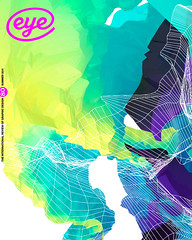Summer 2011
Divided along historical lines
Cartographies of Time
By Daniel Rosenberg and Anthony Grafton, Princeton University Press, $50, £30There is a strong similarity between geography and chronology. Both are concerned with order, with putting things, locations, events, in their rightful place. But while the evolution of map-making has been catalogued in great detail, the same cannot be said for the field of chronography.
This meta-history by the American historians Daniel Rosenberg and Anthony Grafton attempts to redress the balance with an overview of the development of the timeline. With the fourth-century Eusebius Chronicon – a tabular chronology of ancient civilisations – as its main reference point, the basic form of the timeline already seems well established, and any evolution shown could only be described as incremental. The most important moment singled out in the text is the eighteenth-century English scientist Joseph Priestley’s move to make equal sections represent equal periods – important, certainly, but hardly the ‘visual revolution’ called for by earlier commentators.
The book is lucid and informing but the ‘cartography of time’ it offers is more medieval than Mercatorial, with large areas of geography and history obfuscated, a chronographic ‘here be monsters’. For one thing, it is overwhelmingly Eurocentric, concentrating on Western ‘histories of the world’ from the past 500 years. This is certainly a fertile period but rich topics within the text, such as friction with the Church when timelines going back further than the biblical age of the earth appeared, are mentioned only in passing.
Also, there is only cursory mention of sources such as ancient king-lists, and none whatsoever of items from antiquity such as the Palermo Stone or the Turin Royal Canon, both graphic records of ancient Egyptian lineage with multiple layers of complex information predating Eusebius by thousands of years, which – while admittedly outside the book’s main focus – could have enriched its story.
That which is featured here, however, is well researched and contextualised with links to both developments in the graphic world (including printing and the influence of other forms of visual information) and the world in general. The plentiful images are a compelling curation in their own right. Depictions of history as great rivers or trees or children’s games, and mapped onto the body of a king or a bear or a dragon, or displayed as a ‘radially folding synchronous chart’, show the breadth of imagination in representing time. Examples from different fields – as well as Mercator and Priestley, Dürer, Piranesi and the statistical pioneer William Playfair also feature – show that graphic design was important long before there were ‘graphic designers’.
First published in Eye no. 80 vol. 20 2011
Eye is the world’s most beautiful and collectable graphic design journal, published quarterly for professional designers, students and anyone interested in critical, informed writing about graphic design and visual culture. It is available from all good design bookshops and online at the Eye shop, where you can buy subscriptions, back issues and single copies of the latest issue.

